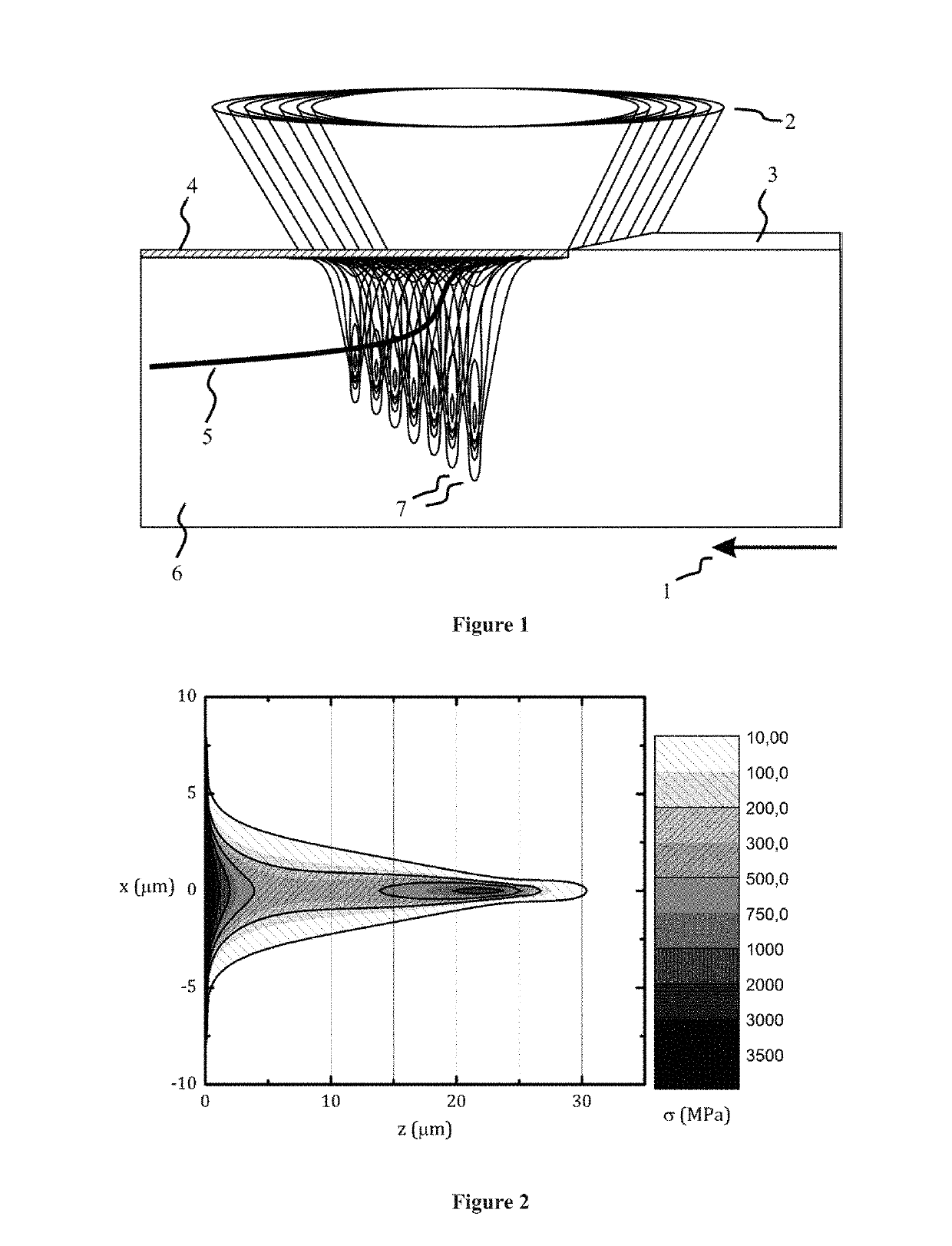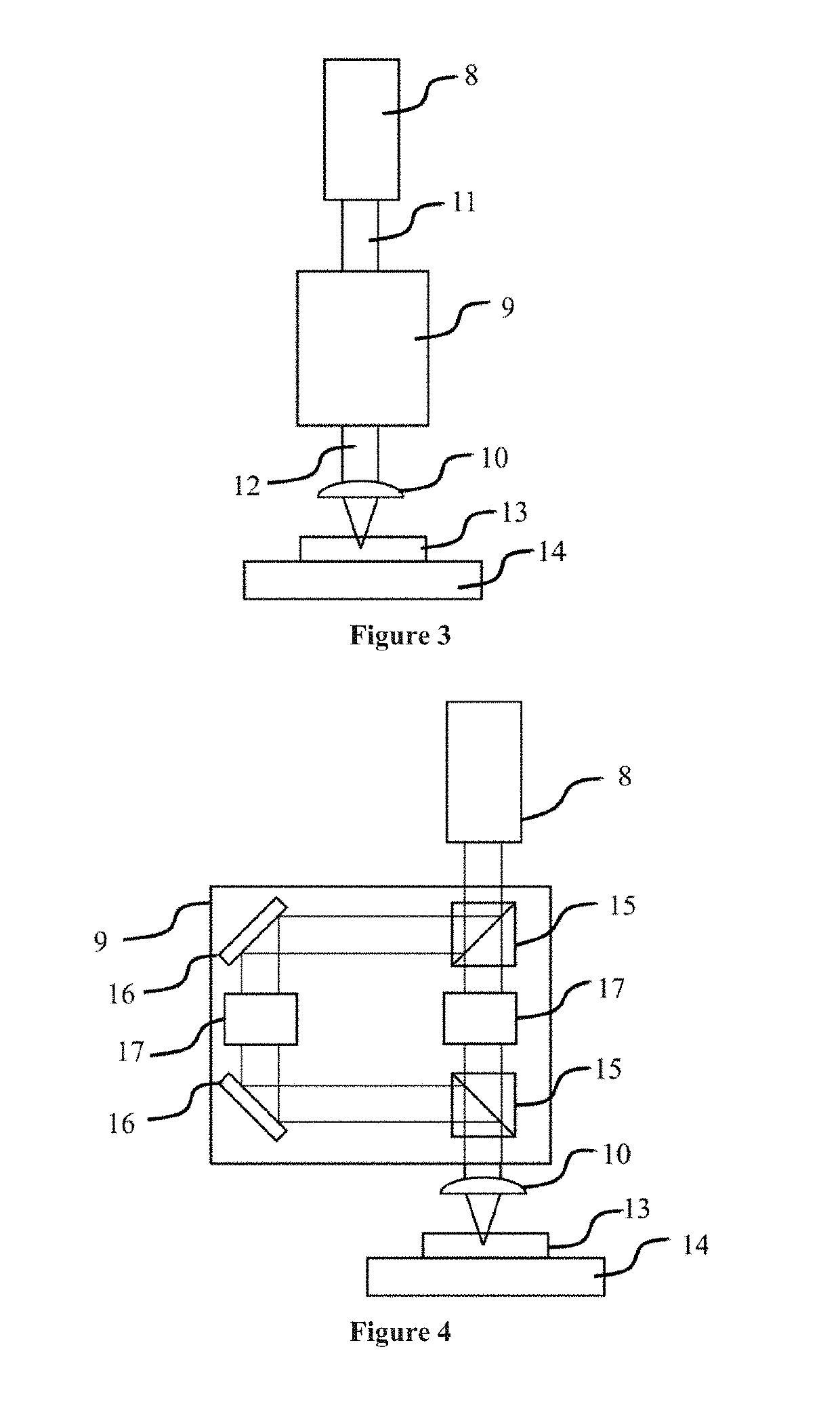Method of laser scribing of semiconductor workpiece using divided laser beams
a laser beam and semiconductor technology, applied in the direction of semiconductor/solid-state device details, manufacturing tools, welding/soldering/cutting articles, etc., can solve the problems of prior art methods imposing limitations on substrate thickness, material type and processing quality used for wafer separation, and achieve the effect of increasing the yield of production and effective and rapid laser processing methods
- Summary
- Abstract
- Description
- Claims
- Application Information
AI Technical Summary
Benefits of technology
Problems solved by technology
Method used
Image
Examples
example 1
[0031]Workpiece substrate material is SiC (4H—SiC) with a single metal coating of gold. Primary and secondary pulse energy equally combined is 10 mikrojoules. The laser source is a femtosecond laser having an output radiation wavelength 1030 nm, pulse width below 300 fs (full width at half maximum / 1.41), set at an output frequency of 200 kHz. Both primary and secondary beams are altered with non-linear second harmonic generation crystal to be of 515 nm wavelength. Primary and secondary pulses are set with a delay of 100 ps. The focusing unit is arranged with a 0.15 NA focusing objective lens, as the beam converging means, with a focal length of 15 mm. Linear workpiece translation speed is set to 100 mm / s. Result of such processing are summarized in FIG. 5 and FIG. 6.
PUM
| Property | Measurement | Unit |
|---|---|---|
| thermal relaxation time | aaaaa | aaaaa |
| thermal relaxation time | aaaaa | aaaaa |
| energy bandgap | aaaaa | aaaaa |
Abstract
Description
Claims
Application Information
 Login to View More
Login to View More - R&D
- Intellectual Property
- Life Sciences
- Materials
- Tech Scout
- Unparalleled Data Quality
- Higher Quality Content
- 60% Fewer Hallucinations
Browse by: Latest US Patents, China's latest patents, Technical Efficacy Thesaurus, Application Domain, Technology Topic, Popular Technical Reports.
© 2025 PatSnap. All rights reserved.Legal|Privacy policy|Modern Slavery Act Transparency Statement|Sitemap|About US| Contact US: help@patsnap.com



